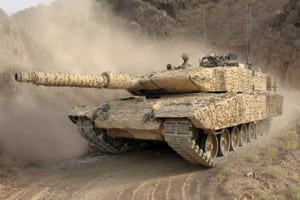
The world’s largest land-warfare trade show begins next week in Paris with all eyes trained eastward toward NATO’s border with Russia, which in the two years since the last Eurosatory meeting has cause a resurgence of Cold War tension.U.S. and foreign defense manufacturers see a ripe market for component upgrades to existing vehicles, which militaries see as a way to affordably speed technologies to the field. Topping the list of common requirements are upgraded armor and lethality to contend with…

 By
By 











